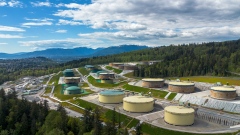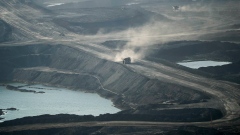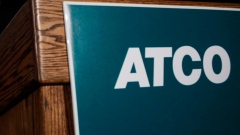Jul 6, 2023
LNG Canada to begin start-up activities within next year
, Bloomberg News
Why Mexico moves faster than Canada on LNG terminals
LNG Canada will begin some start-up activity within the next year, with the first cargoes of liquefied natural gas scheduled to be shipped by the middle of the decade, the project’s chief executive officer said in a phone interview.
The project to build a 14 million metric ton a year liquefaction plant in Kitimat, on the British Columbia Coast, is 85 per cent finished, said Jason Klein, chief executive officer of LNG Canada Development Inc., the global consortium led by Shell Plc that’s behind the project.
Since the invasion of Ukraine, which disrupted Russian gas pipeline supply to Europe and accelerated the rush to buy North American LNG, Canada’s West Coast has been appealing to Asian buyers not wanting to compete with Europe. The shorter shipping distance to Asia and ample gas supply from massive basins such as the Montney and Duvernay in British Columbia and Alberta have been touted for decades to develop LNG exports.
The last of the major liquefaction modules for LNG Canada are scheduled to arrive by month end, Klein said. A total of 6,500 people are currently working at the site finishing up construction.
A planned second phase for the project is still under evaluation by the partners, which include Shell, Petroliam Nasional Bhd, PetroChina Company Ltd., Mitsubishi Corp. and Korea Gas Corp. Plans for an all-electric second phase to slash emissions will have to wait until more power can be supplied by British Columbia Hydro and Power Authority. The company initially may use gas turbines to power phase two of the plant, but could switch to electric at a later date, Klein said. LNG Canada is in discussions with both the utility and government about increasing power delivery to the site.
One of the largest private-sector construction projects in Canada’s history, LNG Canada is estimated to cost $40 billion (US$30 billion) including the cost of the liquefaction plant, pipeline and gas drilling.





